Which wall colors work best with concrete floors? Pairings to complement and elevate this industrial finish
Choosing wall colors that go with concrete floors can be tricky – but these design experts have the answers


As a typically cool-toned material, it can be tricky to find wall colors that go with concrete floors. Plenty of us love the sleek, industrial look of the stuff, and used on flooring it's an ultra-contemporary alternative to wood flooring. But like colors that go with grey, even choosing the right shade of white to go with concrete can prove tricky.
So just how do you find the perfect color pairing? We turned to the experts to get their ideas for wall colors to use with concrete floors, speaking to interior designers and architects who've used the material plenty in their own projects – and have clever ideas for how to work this look.
How to choose wall colors that go with concrete floors
Concrete has some unusual properties that make it trickier to work with, not least because it isn't necessarily uniform. ‘Concrete is a fascinating material, often unpredictable in how it will look once cured,’ says Alessandro Ronfini, partner at DEMO Architects. ‘Its irregularities and inconsistencies are what make it special and I always try to highlight these characteristics.'
It can also have color-changing tendencies, as Chad Falkenberg of Vancouver interior design studio Falken Reynolds explains. ‘Since most concrete is a grey, and grey tends to take on the opposite color of anything around it, it’s good to test colors next to the concrete,’ he says. ‘A bright blue, for example, may make the concrete look orange.’
'I don't think there is a rule of thumb: it all depends on the context, the mood and program of the project and the style of the client,' adds Alessandro Ronfini. 'With a good designer at the helm, concrete floors can go with a lot of different textures and colors.’
Still, a bit of guidance is never a bad thing – so read on for the colors designers are using alongside concrete flooring right now.
1. White
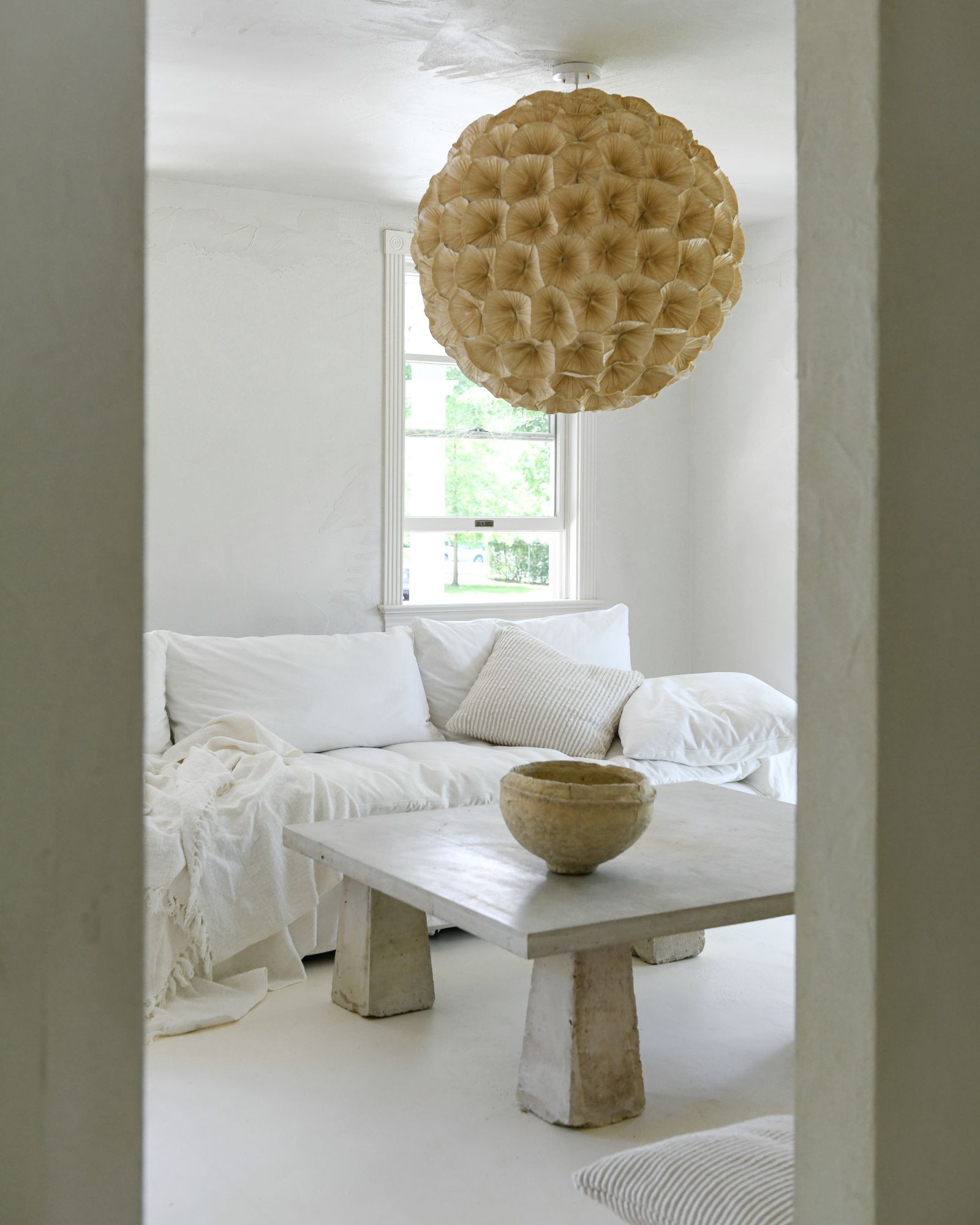
Concrete and white walls are, of course, a common pairing – so it's no surprise it's first on the list. But while many enjoy the minimalist palette offered by this match, it's still crucial to pay attention to the exact shade of white you're using – and select the best white paint for the job.
‘It's important to keep the temperature cohesive,’ says South Bay Area interior designer Cathie Hong. ‘If the concrete floors are a warm gray, I would select a warm white for the walls. Similarly if the concrete has a cool undertone, I would go for a crisper cooler white wall paint.’
‘Concrete floors are sleek and modern, which is great if that's the look you're going for,’ says Louisville-based interior designer Bethany Adams. ‘But if all that sleekness starts to feel stark, you can warm things up by pairing your concrete floors with a creamy white paint – try Benjamin Moore's Simply White – warm wood accents and soft furnishings full of texture like boucle, tweed, or even sheepskin. Try to steer clear of anything with gray, blue, or green undertones so that there's some contrast.’
And of course, such a pared-back scheme needs extra texture to keep things interesting. In the above white living room by Leanne Ford Interiors, the Pennsylvania-based designer uses a stone coffee table and loose-cover sofa to lift the minimal foundations of the room.
2. Wood tones
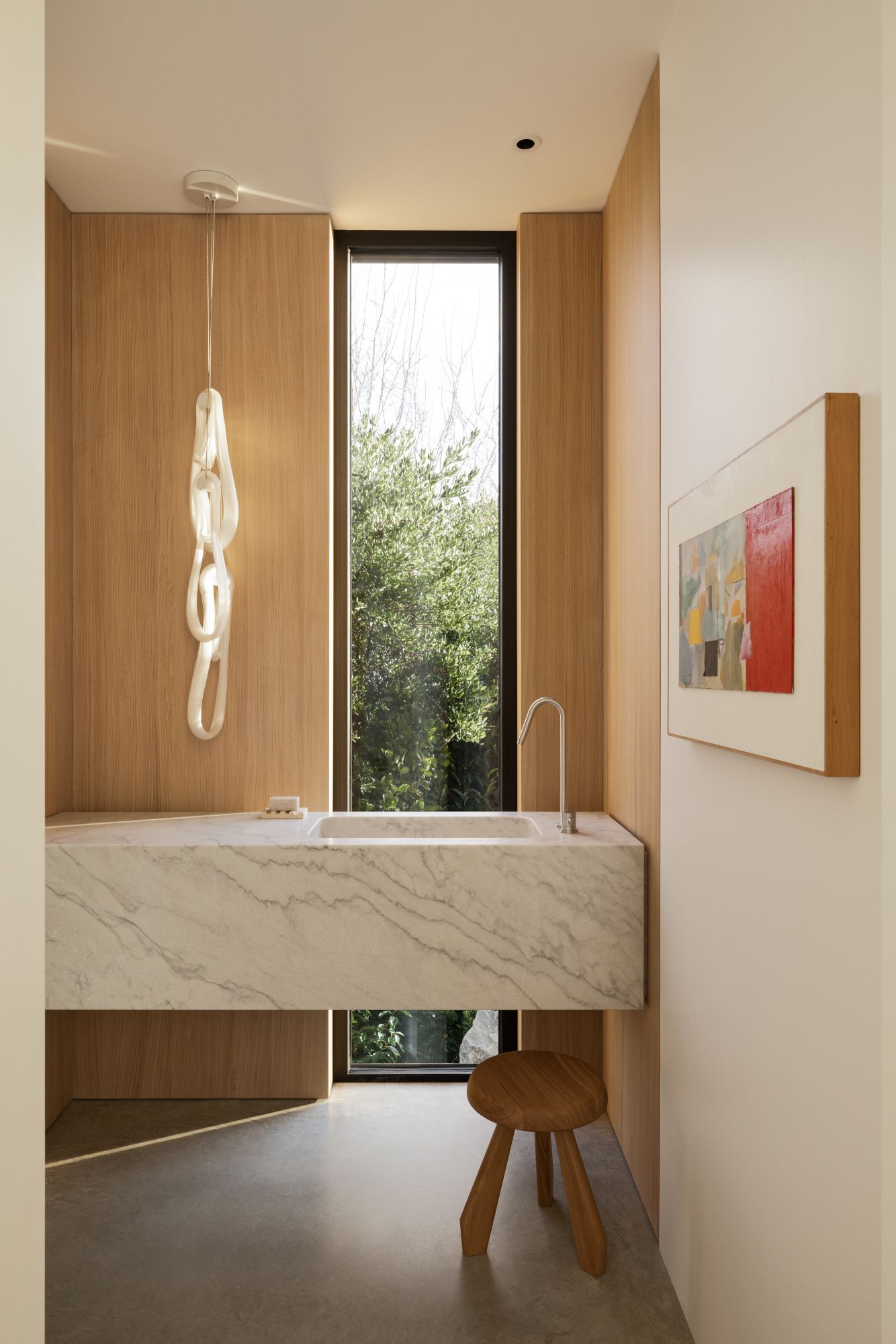
While not a color in itself, a wood accent wall was by far the most popular recommendation from the designers we spoke to, thanks to its innate ability to warm up a scheme – something a room with concrete flooring will always need. ‘The softness and warmth of wood creates a special bond with the hardness and grey tint of concrete that it's impossible to replicate with colors,’ says Alessandro Ronfini.
‘I love to incorporate wood to warm up a space, and wood and concrete are so complementary while both feeling natural,’ says Cathie Hong. ‘White oak is an easy choice because of its naturally warm undertones.’
Of course, pay attention to the undertones of the flooring before selecting a wood. In the above wood bathroom by Falken Reynolds, the concrete floor was quite warm – ‘so we were safe to use wood on the ceiling and walls without the concrete taking on a blue undertone and feeling cool,’ says Chad Falkenberg.
If you prefer to use paint, warm colors with low contrast can offer a similar feel to wood. ‘Warm earthy lighter paint would make the overall space feel warm and allow the grey to take on a bit of the reflected warmth, while also providing relief from it and making the space feel more interesting,' adds Chad. 'That gentle relief is what allows us to stay in a space for longer without our eyes feeling fatigued from seeing too much of a single color.’
3. Grey

While it's the closest color match to concrete, grey isn't necessarily a no-go for an interiors scheme – though it's probably not the pairing for you if you want something warm and cocooning. Rather, it creates fabulously cool, contemporary spaces like the kitchen above, designed by Cathie Hong Interiors.
In it, an expanse of blue-grey cabinets – paired with tiling with grey grouting – offers a slight contrast to the warmer grey of the polished concrete flooring. 'Much like the rest of the house, we kept the color palette neutral but warm with oaks and warm whites, but added in colorful accents through accessories,' Cathie says.
4. Blue
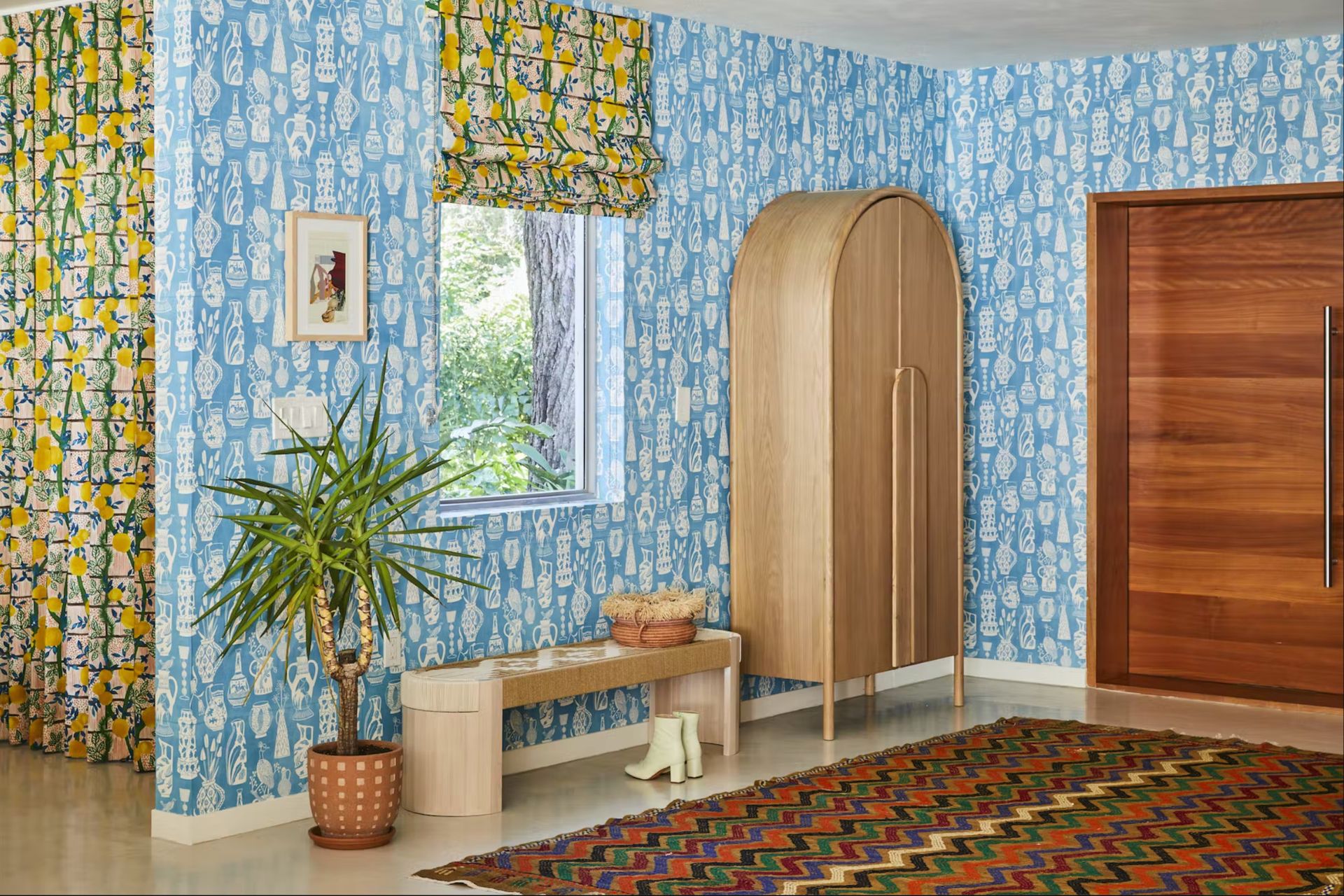
If you're attracted to the blue-grey cabinets above, consider taking the pairing further by opting for brighter blue walls with a concrete floor. In this entryway by Bunsa Studio, light blue patterned wallpaper – interspersed with hints of yellow through the window dressings – make for a surprisingly fresh contrast with the warmer concrete floor.
Embracing concrete's complementary tones can be a good technique to use when it comes to selecting a wall color. 'Grey concrete is often a cool hue,' says Faith Swickard, associate at Wittman Estes. 'Complementary colors enhance the tone – blues, greens, darker maroons.' And since grey is a color that goes with blue, we can see why concrete works so well with it too.
5. Yellow
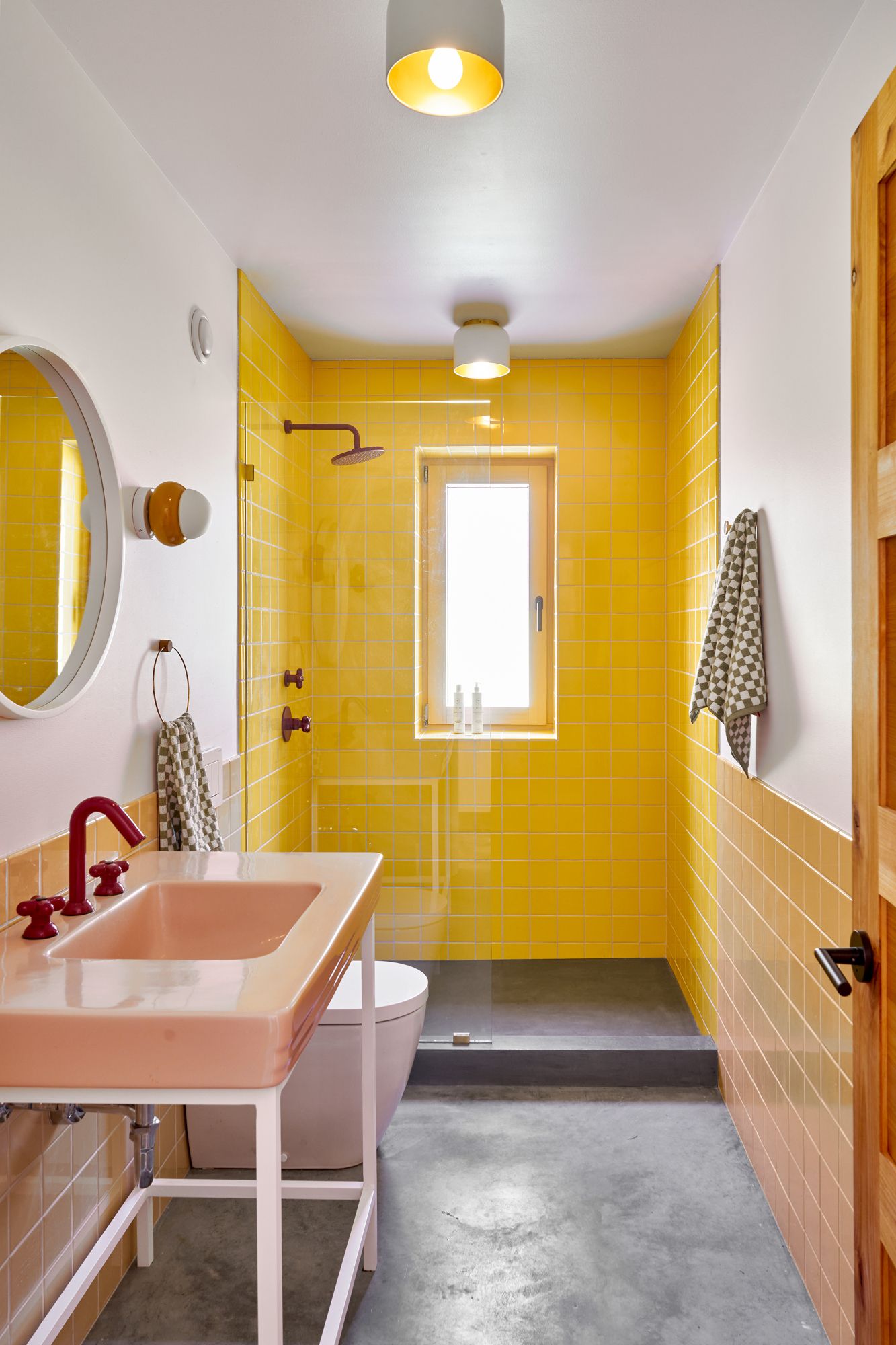
It's well known that grey is a great color that goes with yellow, so it's no surprise that yellow and concrete create a dynamic, warm and playful space. Consider using yellow in a kitchen with wood cabinets and a concrete floor – or for a bolder take on the palette, go for bright yellow wall tiles in a bathroom and temper with a concrete floor.
It's something DEMO Architects did to great effect in the space above. ‘In this bathroom, considering the size and limited daylight, I tried to contrast it with bright colors that would bring a lot more warmth to an otherwise small space,’ says Alessandro Ronfini.
In general, the rule applies that most confident pops of color can work with concrete. ‘Any saturated hue will provide dynamic contrast to concrete – think pop art in an industrial warehouse with concrete floors compared to a hardwood,’ says Chad Falkenberg. ‘The colors will seem even more rich because the concrete is so unsaturated and grey.’
6. Pink
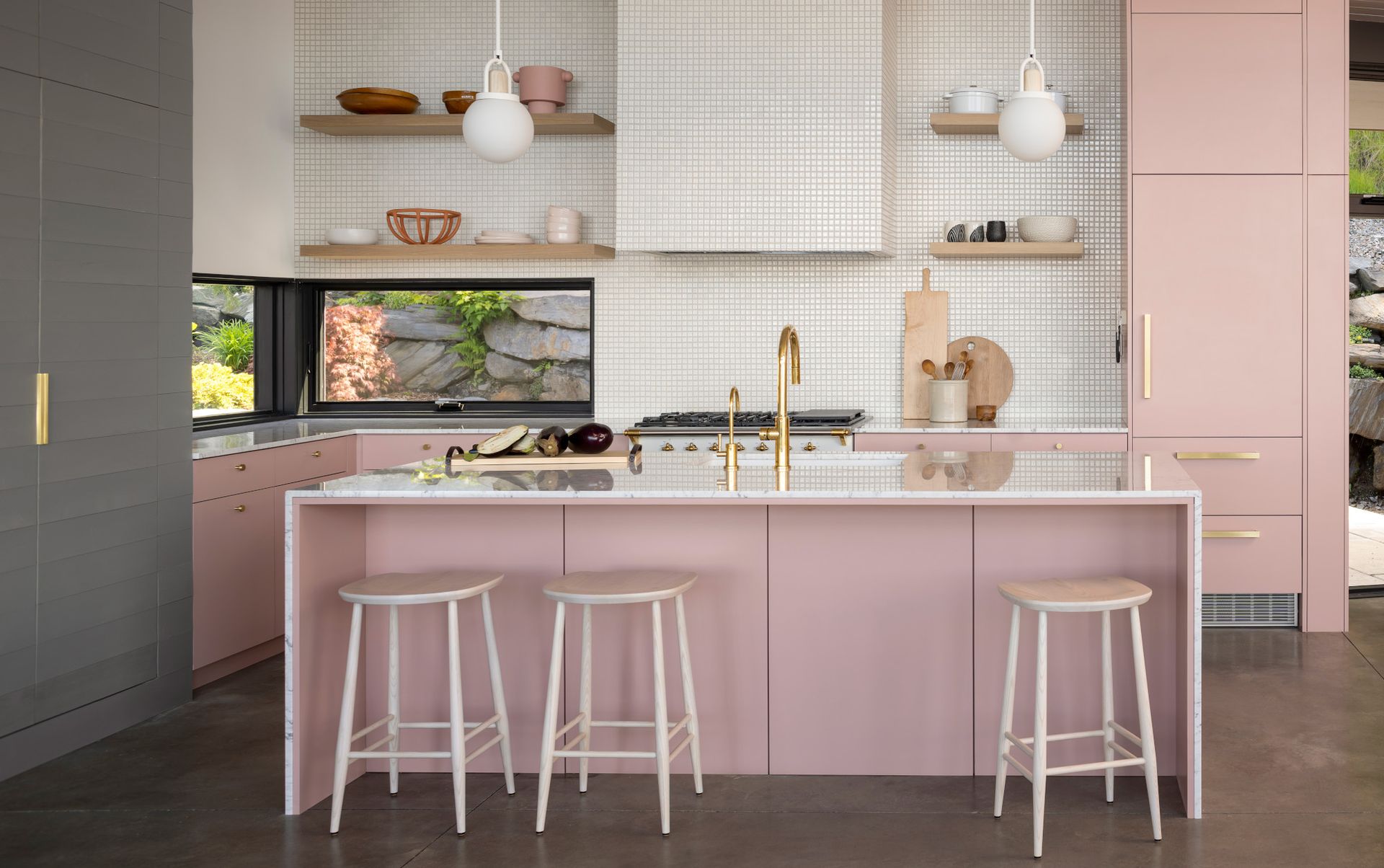
You might have seen pink and concrete being used together, popular as they are as a softer color pairing (grey is also a common color that goes with pink). This combination works particularly well in a bedroom, thanks to its more subtle, soothing effect – be sure to choose a paler or earthier pink rather than something brighter. Creating balance with this scheme is an art.
Alternatively, pink is a great choice for a color pop in a kitchen with a concrete floor. Try pink plaster on your walls, or opt for pink kitchen cabinetry, like this space by Prentiss Balance Wickline Architects: accent with gold hardware and soft woods to round off the scheme.
What colors go with colored concrete floors?
Unless you want an all-over color-drench look, it's best to stick to neutral – usually white – walls if you're using a colored concrete floor. Follow the advice above and choose a shade that matches the warm or cool undertones of your concrete, and consider introducing wood to your scheme to soften and add warmth.
Alternatively, choose a shade that's tonally lighter than your flooring to add subtle depth to the scheme without introducing a whole new color. Want to go bold? Carry the same shade up your walls, over skirting and woodwork, for a scheme that's cozy, cocooning and very on trend.
Which wall finishes work well with concrete floors?
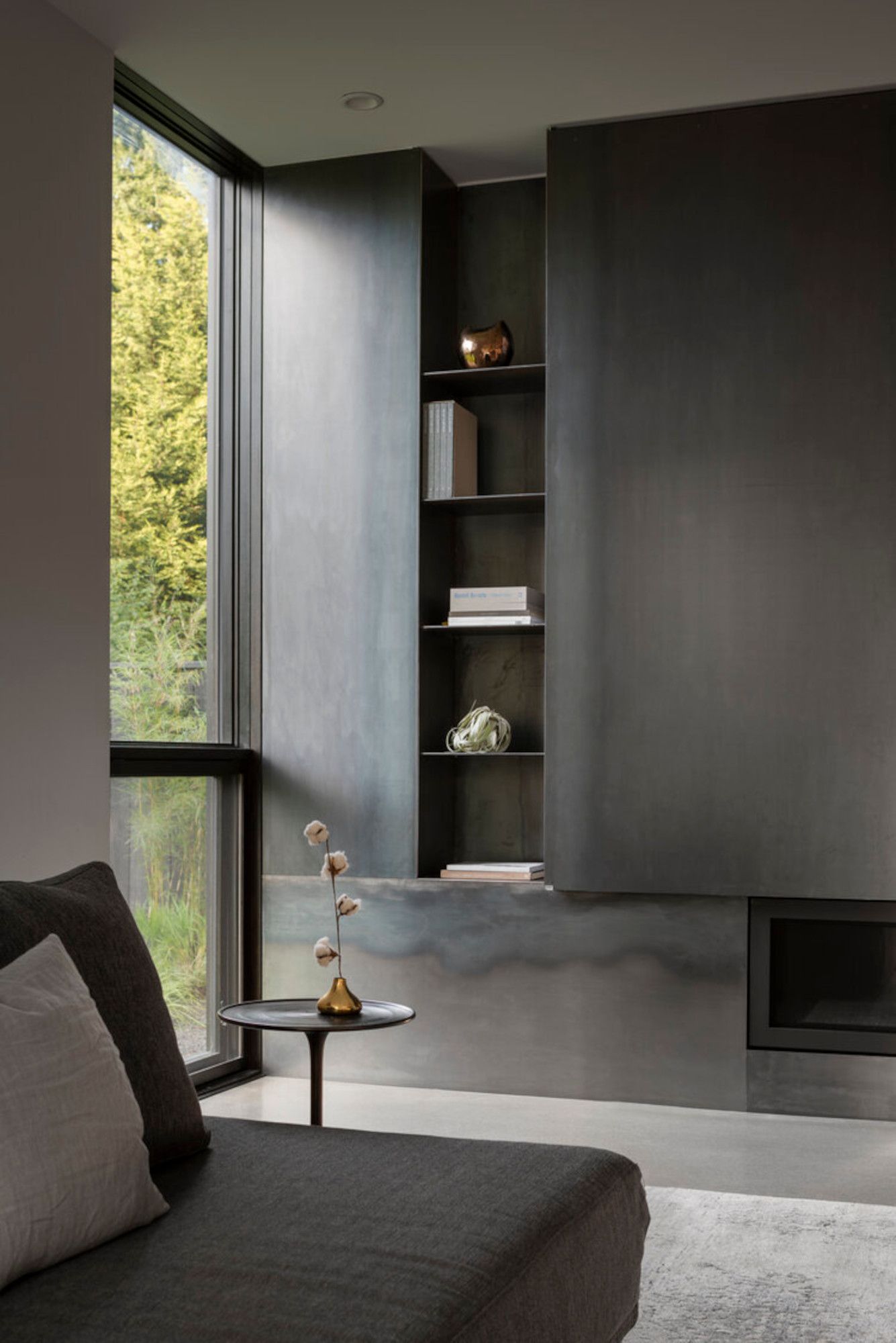
The smooth, polished finish of concrete floors make them the perfect grounding element for a highly textural scheme – particularly wall finishes. 'For the ultimate in warmth and texture, consider a hand-troweled plaster finish on walls,' says Bethany Adams.
For the Seattle-based design studio Wittman Estes, the above living room was an opportunity to experiment with another industrial-inspired material, raw steel. Used to create a wall of storage and a fire surround, it's an interesting pairing to concrete – and contrasts with the natural landscape outside. 'The color scheme was drawn from the client’s industrial minimalist aesthetic,' says Faith Swickard. 'We used repeated elements in each space for a calm, uncluttered, and unified expression. The concrete floor serves as both the floor structure and a clean, minimalist base for the room composition.'
Indeed, mixing materials in this way is a good route to unexpected interiors. 'We create unexpected pairings through materials with balanced textural interest (concrete, stone, steel) or by shaping planes of materials throughout the house,' Faith adds. 'An example is to use concrete for the floor plane, wood from the casements and walls, and steel as a complete wall fireplace. We juxtapose material compositions by bringing the look and color of indoor materials outside and framing them with plants and trees. The soft greens of the plantings contrast with the hard edge of concrete pavers, creating a high contrast palette.'
And don't shy away from pairing concrete with luxe materials. For their Cadboro Bay project, Falken Reynolds used two popular materials as a pleasing contrast to the concrete floor. ‘Concrete has an industrial and raw feeling to it so it’s fun to juxtapose very refined materials with it,’ says Chad Falkenberg. ‘We paired the concrete in the powder room with more sophisticated marble as well as handblown glass – the concrete pulls casual and durable so the overall space meets in the middle and feels elevated while also being approachable.’
Be The First To Know
The Livingetc newsletter is your shortcut to the now and the next in home design. Subscribe today to receive a stunning free 200-page book of the best homes from around the world.

Ellen is deputy editor of Livingetc magazine. She cut her teeth working for sister publication Real Homes, starting as features editor before becoming deputy editor. There, she enjoyed taking a peek inside beautiful homes and discovered a love for design and architecture that eventually led her here. She has also written for other titles including Homes & Gardens and Gardeningetc. While she gets ready to buy a house of her own, she takes inspiration from the works of some of her favourite architects and tastemakers. She has a particular passion for green design and enjoys shopping small, local and second-hand where she can.
-
 How to Thaw a Frozen Pipe — Learn Everything You Need to Know in 5 Minutes With This Guide
How to Thaw a Frozen Pipe — Learn Everything You Need to Know in 5 Minutes With This GuideWinter storm caught you off guard? We asked an expert — just how do you thaw a frozen pipe?
By Hugh Metcalf Published
-
 The 12 Very Best Silk Bedding Pieces — As Our Style Editor Says: 'It's What Dreams Are Made Of!'
The 12 Very Best Silk Bedding Pieces — As Our Style Editor Says: 'It's What Dreams Are Made Of!'Slumber in lustrous luxury with the very best silk bedding sheets, duvets, pillowcases, and more — your sleep score will thank us later
By Julia Demer Published

